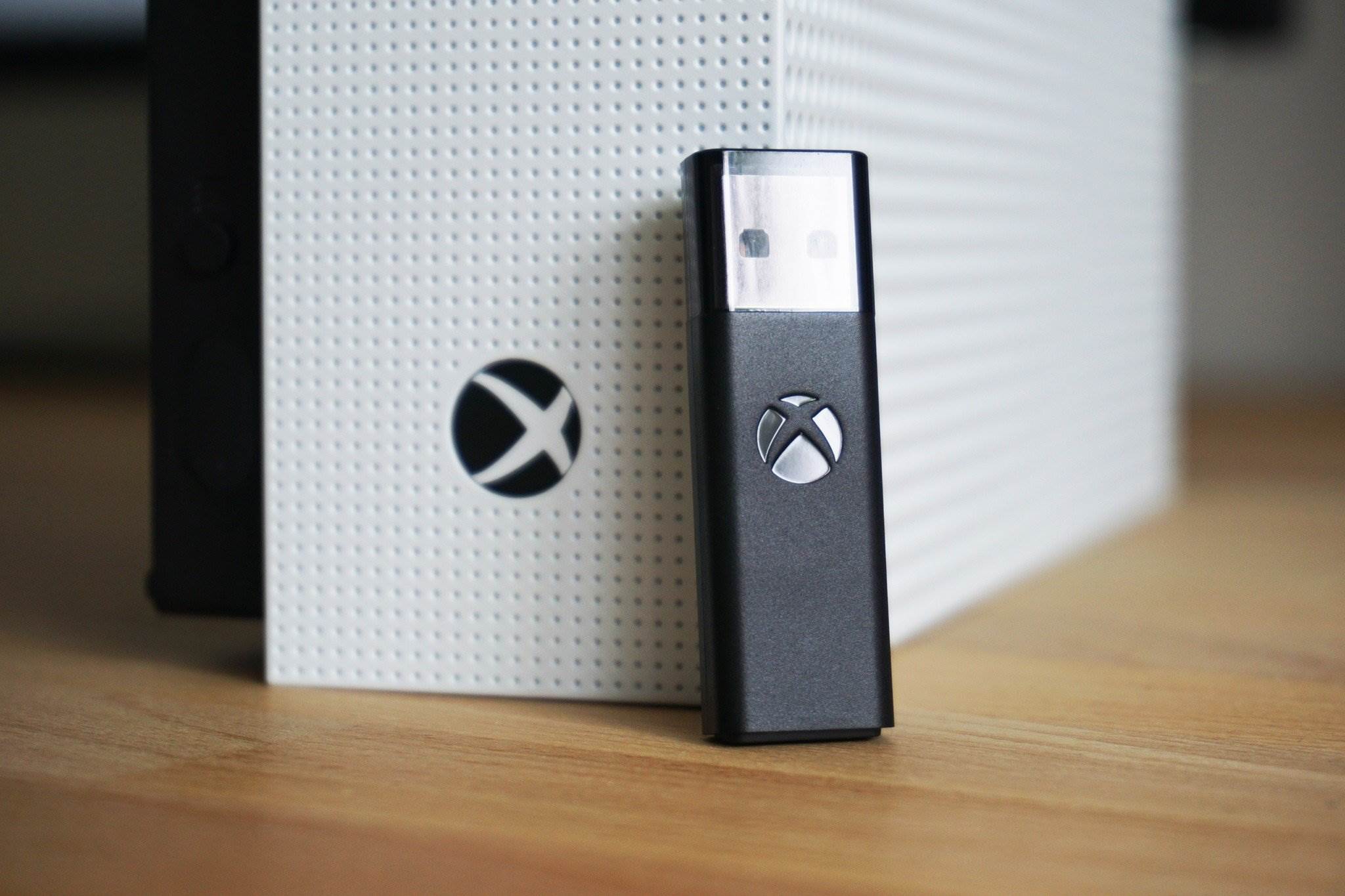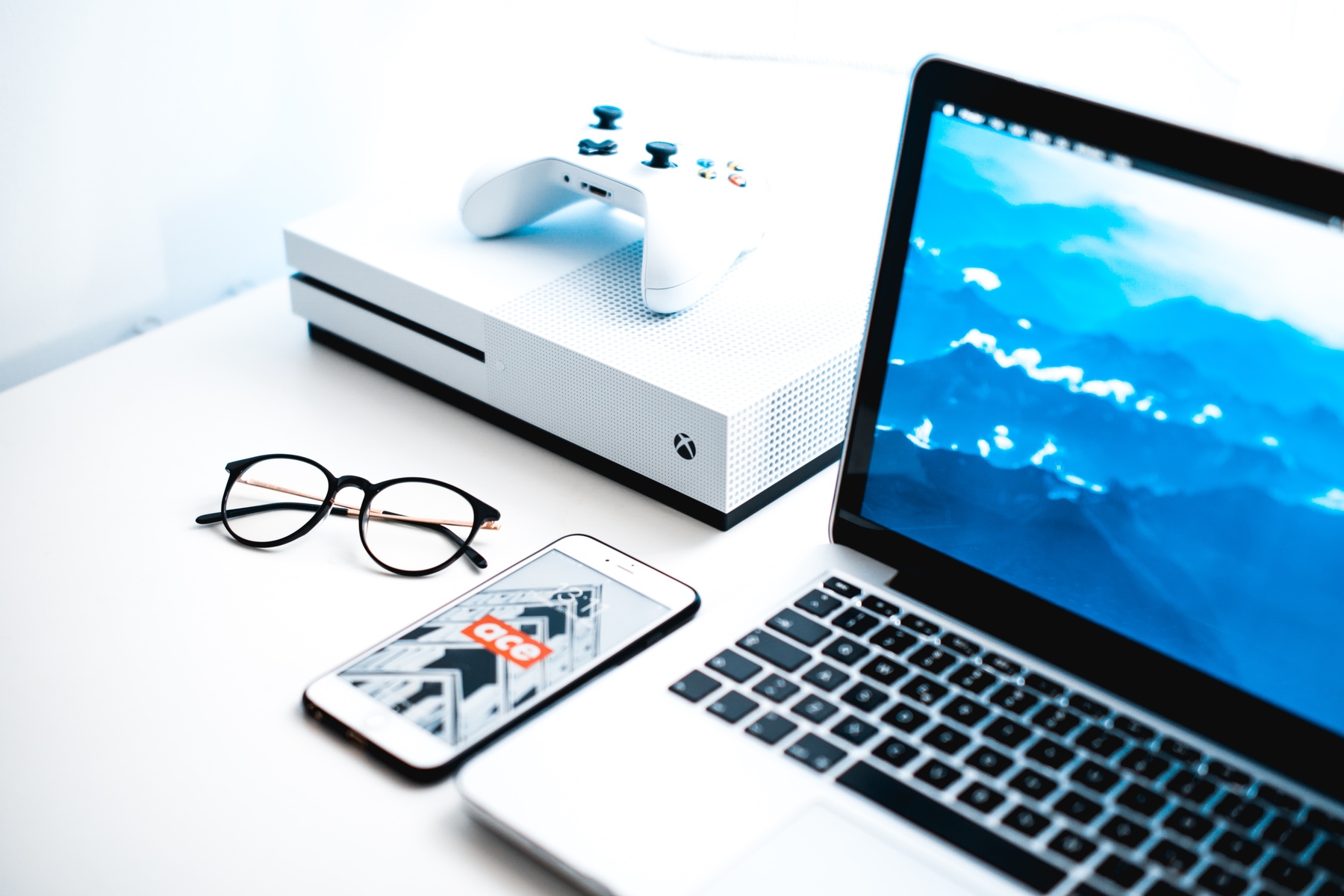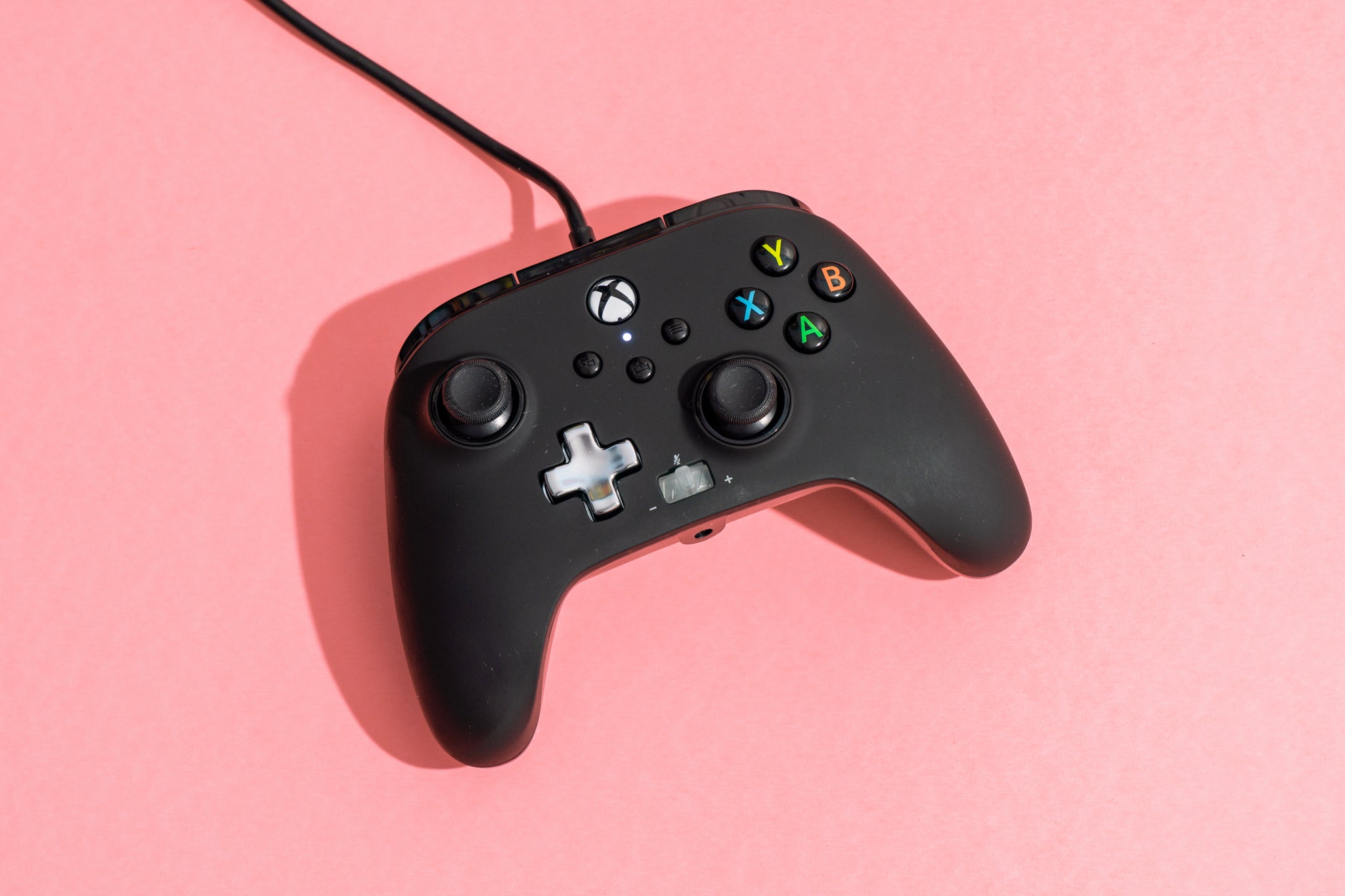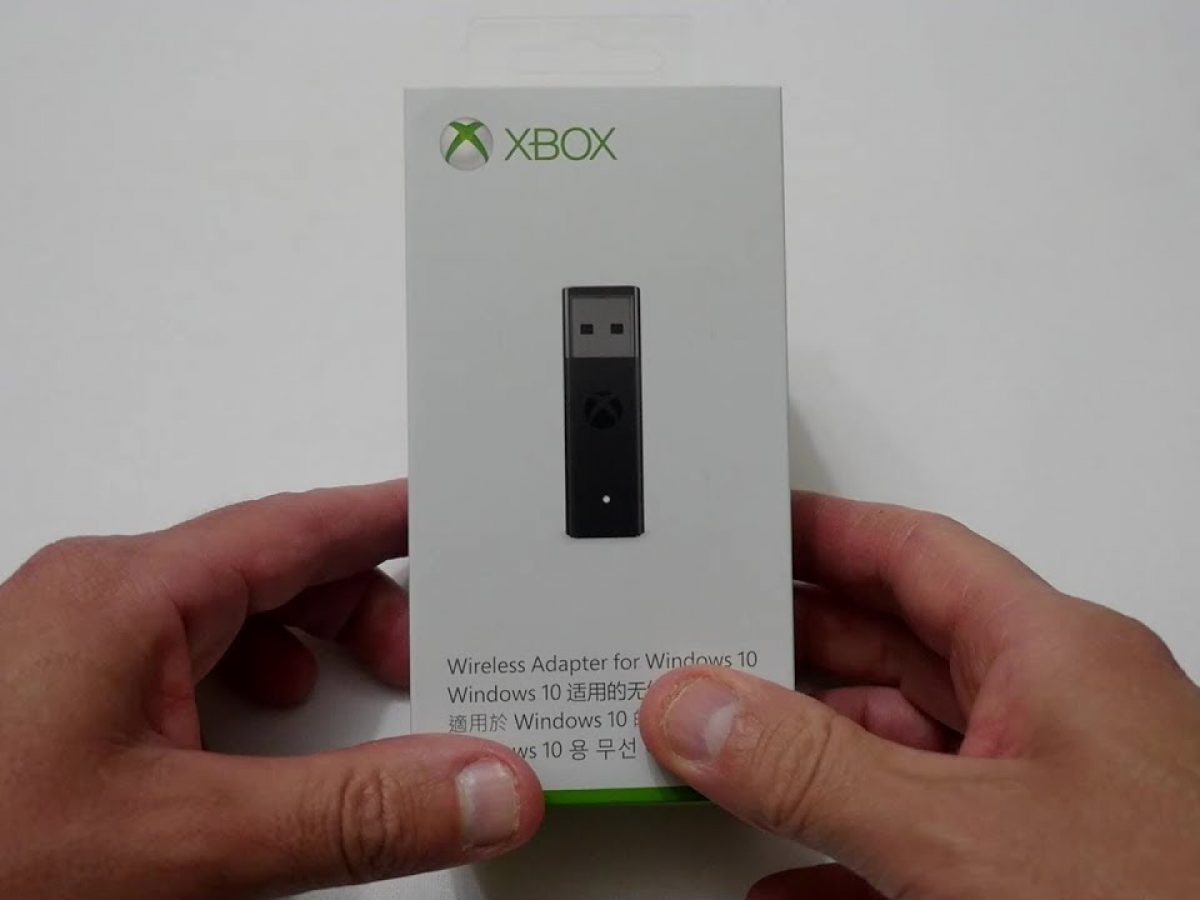Introduction
The Xbox controller is a popular choice for gamers, offering a comfortable and intuitive gaming experience. However, you may encounter an issue where your Xbox controller fails to connect to your PC. This can be frustrating, especially when you’re eager to jump into your favorite games. There are several reasons why your Xbox controller may not be connecting to your PC, but the good news is that there are solutions available to help you resolve this problem.
In this article, we will explore the common reasons behind the Xbox controller connectivity issue and provide step-by-step solutions to help you get your controller working again. Whether you’re using a wired or wireless controller, these troubleshooting methods should help you overcome the connectivity problem and get back to gaming.
It’s worth noting that these solutions are applicable for both Xbox 360 and Xbox One controllers. So regardless of the type of controller you’re using, you’ll find useful tips and tricks to troubleshoot the connection issue with your PC.
Before diving into the solutions, it’s important to ensure that your Xbox controller and PC are compatible. While Xbox controllers work seamlessly with Xbox consoles, there may be some compatibility limitations when it comes to using them with a PC. It’s essential to check the compatibility to avoid any compatibility-related issues during the troubleshooting process.
Now, let’s explore the common reasons behind the Xbox controller not connecting to your PC and the step-by-step solutions to resolve the issue.
Common Reasons for Xbox Controller Not Connecting to PC
There could be various reasons why your Xbox controller is not connecting to your PC. Understanding these common causes will help you identify the root of the problem and apply the appropriate solution. Here are some of the most typical reasons for this issue:
- Compatibility: One of the primary reasons that can prevent the Xbox controller from connecting to your PC is compatibility. While Xbox controllers are designed to work flawlessly with Xbox consoles, they may have compatibility limitations when used with a PC. Ensure that your Xbox controller is compatible with your PC before proceeding with troubleshooting.
- Outdated firmware: Outdated firmware can also lead to connectivity problems. If you haven’t updated the firmware of your Xbox controller, it may not be recognized by your PC. Updating the firmware is essential to ensure compatibility and resolve any potential issues.
- Power saving mode: Another common reason for the controller not connecting is the power-saving mode. When the controller is idle for a certain period, it may enter a power-saving mode, causing it to disconnect from the PC. Disabling the power-saving mode can resolve this issue.
- Faulty USB port or cable: A faulty USB port or cable can be a culprit behind the connectivity issue. If the USB port or cable is damaged or not working correctly, it can prevent the controller from connecting to your PC. Check the USB port and cable for any signs of damage or try using a different port/cable to see if that resolves the problem.
These are just a few examples of why your Xbox controller may not be connecting to your PC. It’s important to consider these factors and carry out the necessary troubleshooting steps to identify and resolve the issue. In the following sections, we will discuss step-by-step solutions to help you overcome this problem and get your Xbox controller working seamlessly with your PC.
Solution 1: Ensure Xbox Controller is Compatible with PC
Before diving into troubleshooting, it’s crucial to verify that your Xbox controller is compatible with your PC. While Xbox controllers are designed to work seamlessly with Xbox consoles, there may be compatibility limitations when using them with a PC. Follow these steps to ensure compatibility:
- Check system requirements: Review the system requirements specified by Microsoft for using Xbox controllers with a PC. Ensure that your PC meets the minimum requirements, including the operating system version, USB ports, and any additional software or drivers.
- Wired vs. wireless compatibility: Determine whether you are using a wired or wireless Xbox controller. Xbox wireless controllers require a wireless adapter when used with a PC, while wired controllers can be connected directly via USB. Confirm that you have the necessary adapter or cable for your Xbox controller.
- Xbox One controller compatibility: If you are using an Xbox One controller, make sure to have the updated model that supports Bluetooth connectivity. The older Xbox One controllers use a proprietary wireless technology and require the wireless adapter for PC connectivity.
- Wired workaround: If you are facing compatibility issues with a wireless Xbox controller, you can try connecting it to your PC using a USB cable instead. This bypasses any wireless connectivity issues and allows you to use the controller in wired mode.
By ensuring that your Xbox controller is compatible with your PC, you lay a solid foundation for troubleshooting the connectivity issue. If you determine that compatibility is not the problem, proceed to the next solution in order to resolve the Xbox controller not connecting to your PC.
Solution 2: Update Xbox Controller Firmware
Outdated firmware can often cause connectivity issues between your Xbox controller and PC. To ensure a smooth connection, it’s important to keep the firmware of your Xbox controller up to date. Follow these steps to update the firmware:
- Connect your Xbox controller to your PC: If you’re using a wired controller, connect it to your PC using a USB cable. For wireless controllers, ensure that they are within range of the wireless adapter or have a Bluetooth connection established with your PC.
- Install the Xbox Accessories app: Go to the Microsoft Store or the Xbox website and download the Xbox Accessories app. This app allows you to update the firmware of your Xbox controller.
- Open the Xbox Accessories app: Once the app is installed, open it on your PC. The app will automatically detect your connected Xbox controller.
- Check for firmware updates: In the Xbox Accessories app, look for the “Devices & accessories” tab. Select your connected controller from the list of devices. If a firmware update is available, you will see an option to download and install it.
- Follow the on-screen instructions: If a firmware update is available, follow the on-screen instructions to initiate the update process. Make sure that your controller remains connected to your PC during the update.
- Restart your PC and test the connection: Once the firmware update is complete, restart your PC and test the connectivity of your Xbox controller. It should now be able to connect to your PC without any issues.
Updating the firmware of your Xbox controller ensures that it’s compatible with your PC’s operating system and resolves any potential connectivity problems. If this solution doesn’t resolve the issue, proceed to the next one in order to troubleshoot further.
Solution 3: Reset Xbox Controller
If your Xbox controller is still not connecting to your PC after ensuring compatibility and updating the firmware, performing a reset may help resolve the issue. Resetting the controller can clear any minor glitches or settings that may be causing the connectivity problem. Follow these steps to reset your Xbox controller:
- Turn off the Xbox controller: If your controller is turned on, press and hold the Xbox logo button for about 10 seconds until it turns off. You can also remove the batteries or disconnect the controller if it is wired.
- Perform a physical reset: Locate the small reset button on your Xbox controller. It is usually located near the shoulder buttons or on the back. Use a paperclip or a small pin to press and hold the reset button for a few seconds.
- Turn on the Xbox controller: After releasing the reset button, press the Xbox logo button to turn on the controller. If you removed the batteries, reinsert them or reconnect the controller if it is wired.
- Reconnect to your PC: Once the controller is powered on, try connecting it to your PC again. If it was a minor glitch causing the issue, the reset should have resolved it, and the controller should now connect successfully.
By performing a reset on your Xbox controller, you give it a fresh start and eliminate any potential settings or connectivity problems. If the controller still fails to connect after the reset, move on to the next solution to troubleshoot further.
Solution 4: Disable Power Saving Mode
If your Xbox controller keeps disconnecting from your PC, it may be due to the power-saving mode. When the controller is idle for a certain period, it can enter power-saving mode, causing it to disconnect from the PC. Disabling the power-saving mode can help maintain a consistent connection. Follow these steps to disable the power-saving mode for your Xbox controller:
- Open Device Manager: Press the Windows key + X on your keyboard and select “Device Manager” from the menu that appears. Alternatively, you can search for “Device Manager” in the Windows search bar and open it from the search results.
- Locate the Xbox controller: In the Device Manager window, expand the “Human Interface Devices” or “Xbox Peripherals” category. Look for your Xbox controller in the list of devices. It may be listed as “Xbox Controller” or under a similar name.
- Access the Properties: Right-click on your Xbox controller and select “Properties” from the context menu. This will open the Properties window for your controller.
- Disable the power-saving mode: In the Properties window, navigate to the “Power Management” tab. Uncheck the box that says “Allow the computer to turn off this device to save power.” This will disable the power-saving mode for your Xbox controller.
- Apply the changes and test the connection: Click “OK” or “Apply” to save the changes. Now, test the connection of your Xbox controller to see if it remains connected to your PC without any disconnections.
Disabling the power-saving mode for your Xbox controller ensures that it remains active and connected to your PC even during periods of inactivity. If this solution doesn’t resolve the connectivity issue, proceed to the next one to troubleshoot further.
Solution 5: Check USB Port and Cable
A faulty USB port or cable can often be the reason why your Xbox controller is not connecting to your PC. It’s essential to check the USB port and cable for any issues and ensure they are functioning properly. Follow these steps to check and troubleshoot the USB port and cable:
- Inspect the USB port: Examine the USB port on your PC for any physical damage, debris, or bent pins. If you notice any issues, try using a different USB port on your computer to connect the Xbox controller.
- Check the USB cable: If you are using a wired Xbox controller, inspect the USB cable for any signs of damage. Look for frayed wires, loose connections, or bent connectors. If you suspect a faulty USB cable, try using a different cable to connect your Xbox controller to your PC.
- Clean the USB port: If you see any debris or dust in the USB port, use compressed air or a soft brush to clean it. Ensure that the port is free from any obstructions that could hamper the connection.
- Use USB ports directly on your PC: If you are using a USB hub or an extension cable, try connecting the Xbox controller directly to a USB port on your PC. Sometimes, using an additional device in between can cause connectivity issues.
- Restart your PC: After checking and troubleshooting the USB port and cable, restart your PC. This can refresh the system and ensure that any changes you made take effect.
By thoroughly inspecting the USB port and cable, you can identify any issues that may be preventing your Xbox controller from connecting to your PC. If the problem persists, move on to the next solution to continue troubleshooting.
Solution 6: Restart PC
Sometimes, a simple restart of your PC can resolve connectivity issues between your Xbox controller and the computer. Restarting your PC helps refresh the system and can clear any temporary glitches that may be causing the problem. Follow these steps to restart your PC and potentially restore the connection with your Xbox controller:
- Save and close any open applications: Before restarting your PC, make sure to save any important work and close all open applications. This ensures that you don’t lose any unsaved data during the restart process.
- Click on the Start Menu: Click on the Start button located at the bottom left corner of your screen. You can also press the Windows key on your keyboard to access the Start Menu.
- Select “Restart” or “Shut down”: From the Start Menu, click on the power button icon and select either “Restart” or “Shut down.” If you choose to shut down, wait a few seconds before turning on your PC again.
- Turn on your PC again: After the restart or shut down process completes, turn on your PC by pressing the power button. Wait for the computer to boot up and go through the startup process.
- Test the connection: Once your PC has restarted, try connecting your Xbox controller again and see if it establishes a stable connection. If the controller connects, you can continue enjoying your games without any interruptions.
Restarting your PC is a simple yet effective troubleshooting step that can resolve many technical issues, including connectivity problems with your Xbox controller. If, after the restart, the controller still doesn’t connect, proceed to the next solution for further troubleshooting.
Solution 7: Reconnect Xbox Controller to PC
If your Xbox controller is still not connecting to your PC, try reconnecting the controller to establish a fresh connection. Follow these steps to reconnect your Xbox controller to your PC:
- Disconnect the controller: If your controller is currently connected to your PC, disconnect it by removing the USB cable or turning off the wireless connection.
- Restart your PC: Before reconnecting the controller, it’s a good idea to restart your PC. This helps ensure a clean system state and removes any temporary glitches that may be causing the connectivity issue.
- Connect the controller again: If you’re using a wired controller, connect it to your PC using the USB cable. For wireless controllers, make sure they are within range of the wireless adapter or Bluetooth connection.
- Wait for the connection to establish: After connecting the controller, give it a few moments to establish a connection with your PC. The operating system should automatically detect the controller and install any necessary drivers.
- Test the connection: Once the connection is established, try using the Xbox controller in your preferred games or applications to ensure that it is working properly and remains connected without any disconnections.
Reconnecting the Xbox controller to your PC can help establish a fresh connection and resolve any minor issues that may have been preventing the controller from connecting. If the controller still fails to connect after reconnection, proceed to the next solution in order to troubleshoot further.
Solution 8: Check Bluetooth Settings
If you are using a wireless Xbox controller that connects to your PC via Bluetooth, checking your Bluetooth settings is essential to troubleshoot connectivity issues. Follow these steps to ensure that your Bluetooth settings are properly configured:
- Enable Bluetooth on your PC: Make sure that Bluetooth is enabled on your PC. You can usually do this by going to the Settings or Control Panel and finding the Bluetooth options. Turn on Bluetooth if it’s currently disabled.
- Put your Xbox controller in discovery mode: Press and hold the Connect button on your Xbox controller until the Xbox button begins to flash rapidly. This puts the controller in discovery mode, allowing your PC to detect and pair with it via Bluetooth.
- Open the Bluetooth settings on your PC: Go to the Bluetooth settings on your PC. This can typically be found in the Settings or Control Panel. Look for a section related to Bluetooth devices or pairing.
- Pair with your Xbox controller: In the Bluetooth settings, click on the option to add a new device or pair a Bluetooth device. Your PC should now search for available devices. Select your Xbox controller from the list of available devices to initiate the pairing process.
- Follow any on-screen instructions: If prompted, follow any on-screen instructions to complete the pairing process. This may include entering a passcode or confirming a pairing request on both your PC and Xbox controller.
- Test the connection: Once the pairing process is complete, test the connection by using your Xbox controller in a game or application that supports it. Ensure that the controller remains connected and functions correctly without any disconnections.
Verifying and adjusting your Bluetooth settings can help establish a reliable connection between your PC and the wireless Xbox controller. If your controller still fails to connect after checking the Bluetooth settings, proceed to the next solution for further troubleshooting.
Solution 9: Update PC Drivers
Outdated or incompatible drivers on your PC can cause connectivity issues with your Xbox controller. Updating your PC drivers ensures that your computer can properly communicate with the controller and establish a stable connection. Follow these steps to update your PC drivers:
- Identify the device drivers: Go to the Device Manager on your PC by pressing the Windows key and X, then selecting “Device Manager” from the menu. Locate the section for “Xbox Peripherals” or “Universal Serial Bus controllers” to find the drivers related to your Xbox controller.
- Check for driver updates: Right-click on the drivers associated with your Xbox controller and select “Update driver” from the context menu. Choose the option to search automatically for updated driver software. Windows will search for the latest drivers online and install them if available.
- Visit manufacturer’s website: If Windows fails to find the latest drivers, visit the manufacturer’s website (such as Microsoft or the manufacturer of your PC) and look for driver updates specifically for your Xbox controller model or the USB controller on your computer.
- Download and install the drivers: Download the latest drivers from the manufacturer’s website and follow the provided instructions to install them on your PC. Make sure to select the appropriate drivers for your operating system version and hardware specifications.
- Restart your PC: After installing the new drivers, restart your PC to ensure the changes take effect. This helps create a clean system state and ensures that the updated drivers are properly loaded.
- Test the connection: Once your PC has restarted, try connecting your Xbox controller again and test if it establishes a stable connection. The updated drivers should enable your PC to recognize and interact with the controller without any issues.
Updating your PC drivers is crucial for maintaining compatibility and resolving connectivity issues with your Xbox controller. If you have completed the driver update process and the controller still does not connect, it’s recommended to seek further assistance or contact the support team for your Xbox controller or PC manufacturer.
Conclusion
Having your Xbox controller not connecting to your PC can be frustrating, especially when you’re eager to start gaming. However, by following the solutions outlined in this article, you can troubleshoot and resolve the connectivity issue with your Xbox controller. Here’s a quick recap of the solutions we discussed:
- Ensure Xbox Controller Compatibility with PC
- Update Xbox Controller Firmware
- Reset Xbox Controller
- Disable Power Saving Mode
- Check USB Port and Cable
- Restart PC
- Reconnect Xbox Controller to PC
- Check Bluetooth Settings
- Update PC Drivers
By taking these steps, you can address common reasons behind your Xbox controller not connecting to your PC. Whether it’s a compatibility issue, out-of-date firmware, or a configuration problem, these solutions will help you get your Xbox controller working seamlessly with your PC again.
Remember, it’s important to follow each solution carefully and test the connectivity after applying them. If one solution doesn’t work, move on to the next until you find the one that resolves the issue for you. If all else fails, consider seeking further assistance from the support team of your Xbox controller or PC manufacturer.
Now that you’re armed with the knowledge to troubleshoot and fix connectivity issues, you can get back to enjoying your favorite games with your Xbox controller and PC. Happy gaming!

























